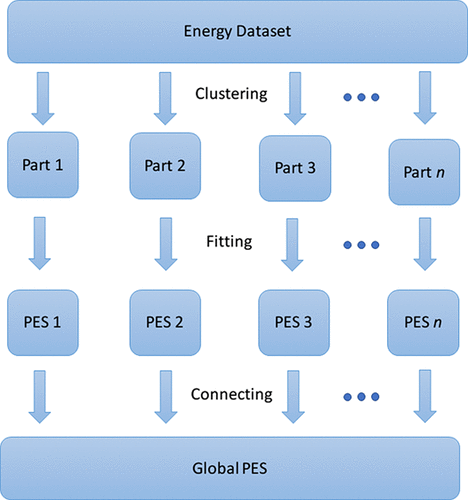当前位置:
X-MOL 学术
›
J. Phys. Chem. A
›
论文详情
Our official English website, www.x-mol.net, welcomes your feedback! (Note: you will need to create a separate account there.)
Application of Clustering Algorithms to Partitioning Configuration Space in Fitting Reactive Potential Energy Surfaces
The Journal of Physical Chemistry A ( IF 2.9 ) Pub Date : 2018-03-07 00:00:00 , DOI: 10.1021/acs.jpca.8b00859 Yafu Guan 1, 2 , Shuo Yang 1, 2 , Dong H. Zhang 1, 2
The Journal of Physical Chemistry A ( IF 2.9 ) Pub Date : 2018-03-07 00:00:00 , DOI: 10.1021/acs.jpca.8b00859 Yafu Guan 1, 2 , Shuo Yang 1, 2 , Dong H. Zhang 1, 2
Affiliation

|
A large number of energy points add great difficulty to construct reactive potential energy surfaces (PES). To alleviate this, exemplar-based clustering is applied to partition the configuration space into several smaller parts. The PES of each part can be constructed easily and the global PES is obtained by connecting all of the PESs of small parts. This divide and conquer strategy is first demonstrated in the fitting of PES for OH3 with Gaussian process regression (GPR) and further applied to construct PESs for CH5 and O+CH4 with artificial neural networks (NN). The accuracy of PESs is tested by fitting errors and direct comparisons with previous PESs in dynamically important regions. As for OH3 and CH5, quantum scattering calculations further validate the global accuracy of newly fitted PESs. The results suggest that partitioning the configuration space by clustering provides a simple and useful method for the construction of PESs for systems that require a large number of energy points.
中文翻译:

聚类算法在拟合电势势能面的配置空间划分中的应用
大量的能量点增加了构造无功势能面(PES)的难度。为了减轻这种情况,应用了基于示例的群集将配置空间划分为几个较小的部分。每个零件的PES都可以轻松构造,并且通过连接所有小零件的PES可以获得全局PES。这种分而治之的策略首先在具有高斯过程回归(GPR)的OH 3的PES拟合中得到证明,并进一步应用于通过人工神经网络(NN)构造的CH 5和O + CH 4的PES 。通过拟合误差以及在动态重要区域中与以前的PES进行直接比较来测试PES的准确性。至于OH 3和CH 5,量子散射计算进一步验证了新安装的PES的整体精度。结果表明,通过集群划分配置空间为构建需要大量能量点的系统的PES提供了一种简单而有用的方法。
更新日期:2018-03-07
中文翻译:

聚类算法在拟合电势势能面的配置空间划分中的应用
大量的能量点增加了构造无功势能面(PES)的难度。为了减轻这种情况,应用了基于示例的群集将配置空间划分为几个较小的部分。每个零件的PES都可以轻松构造,并且通过连接所有小零件的PES可以获得全局PES。这种分而治之的策略首先在具有高斯过程回归(GPR)的OH 3的PES拟合中得到证明,并进一步应用于通过人工神经网络(NN)构造的CH 5和O + CH 4的PES 。通过拟合误差以及在动态重要区域中与以前的PES进行直接比较来测试PES的准确性。至于OH 3和CH 5,量子散射计算进一步验证了新安装的PES的整体精度。结果表明,通过集群划分配置空间为构建需要大量能量点的系统的PES提供了一种简单而有用的方法。


























 京公网安备 11010802027423号
京公网安备 11010802027423号